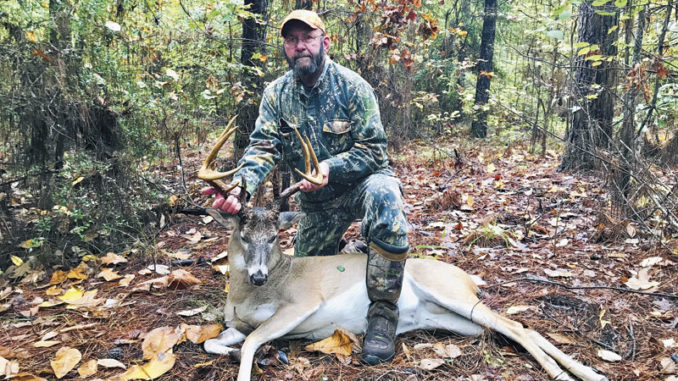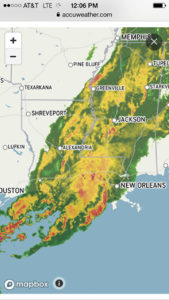
On Halloween night, the first freeze warning was issued for north Louisiana; Nov. 1 would have been a great time to have been in the woods.
Winters in Louisiana can be quite mild. Our weather is controlled by the environment of the Gulf of Mexico. Cold fronts that sweep down from the north and northwest are often short-lived.
This makes for deer hunting that is quite challenging. In the north and mid-west where winters are distinct, it is much easier to pattern deer. In Clinton on Oct. 31, it was 73 degrees, but overnight, a cold front dropped the temperature to 35. The highs for the next three days were predicted to be slightly above 60, with lows in the 30s. The barometric pressure was 29.97 and rising.
These factors make for great deer hunting; unfortunately, in Area 4, the deer season was closed except for bowhunting. Meanwhile, in northwest Louisiana, Area 2, my friends were ecstatic over the cold front that had arrived. That weekend would be the second of gun season and to that date, deer movement and activity had only been fair. Hopes were high that this front would really crank the rut and subsequent deer activity to the next level.
Hot for the cold
It is a well-known fact among Bayou State hunters that when a cold front sweeps across the state, it’s time to be in a deer stand. Call the office and come in late or fill out leave slips for the next few days.
Cold fronts are a time to harvest deer. When the temperature drops below 60 and the barometric pressure is 29 and rising, deer activity climbs. The cold weather brings out the need to feed. It also increases deer activity during the rut; does are coming into heat, and the weather is ideal for bucks to be chasing. Deer have their winter coats, and it is more comfortable for them to be out and about when the temperatures are below 60 than when they is above 70. Feeling frisky is the expression often used to describe this kind of activity.
Timing counts
So when is the best time to hunt a front? Generally, a cold front sweeps into the state bringing rain, or if it is cold, sleet or ice. Deer activity often increases before the front arrives as animals sense the change in weather and feed before it comes through.
If the bad weather is severe, animals will probably bed in thermal cover such as pine plantations and wait for it to pass, so hunting as the front moves through may not be productive.
Once the front passes, when skies clear and the temperature drops, it is time to be in the stand. At some point, deer will move. Sometimes it is right after the front passes; sometimes it is the next day; and sometimes it may be the second or third day after the front.
I remember hunting in East Feliciana when a front was moving through. I was in the stand that afternoon watching the snow fall but saw no deer. I was in the stand the next morning but saw no deer. That afternoon, the snow began to melt, but still no movement. The next morning, I was rewarded with a nice, piney woods 8-pointer. The key is to be able to spend time in the woods during the front. Only hunting a morning or evening may be hit or miss.
Spotty mast

In August, it appeared we would have a pretty good mast crop developing, acorns and pecans. However, drought conditions persisted through mid-October, and that may have hurt the development of mast. I noticed that some oaks began to drop undeveloped acorns. Consequently, it would have been important for hunters to be out in October, scouting for sign.
On Pearl River, I learned that of all the cow oak trees that were loaded last year, only two on the ridge line that I hunt have acorns this year. The water oaks and Obtusa oaks have some acorns. Some acorns are on our property in East Feliciana, but not all trees have acorns. This would be the year to find trees that have mast and hunt them. As mast begins to be eaten up, and if the cold weather continues, the green patches and corn feeders may pay off in the late season.
The drought may have hurt your food plots if you planted too early in September; now would be the time to go in and top-dress your plantings with some more winter grass and clover seed. You don’t need to plow them up; just sow the seed on top and maybe throw out some fertilizer. I planted two long strips in a dove field in late October after the rains came, and they look absolutely great. They are near a patch of joint vetch that deer have been feeding on, so I am hoping they begin to use these strips during the season.
Don’t forget to report your harvest and think about sharing with others who have needs. Good hunting.


